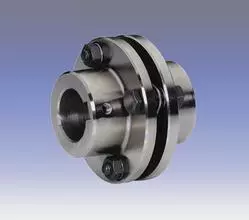Introduction of Economy and Technology of Couplings
There is rationality and applicability for everything that exists. A company that has developed couplings for many years finds out and summarizes economy and technology of couplings. The following is a simple overview of couplings.
There are various kinds, types and specification of couplings. On the base of understanding of each concept of kind, type and specification, choosing couplings depends on the needs of drive system. First choose from the couplings that have been formulated as the standard, at present there are more than ten kinds of couplings having been formulated as national standard and line mark in China, these standard couplings are mainly universal couplings, each kind of coupling has its own characteristics and scope of application, basically can meet the needs of various conditions. In common sense, designers do not need to design couplings by themselves, only when existing standard couplings cannot satisfy the requirements. Standard couplings are convenient to choose and buy and the price is lower than designed non-standard couplings. In numerous standard couplings, correctly choosing the best couplings that suit one’s needs is related to the mechanical product performance of shaft drive work, reliability, service life, vibration, noise, energy saving, transmission efficiency, accuracy, economy and a series of problems, also related to the quality of mechanical products.
Couplings have lots of models and types and according to the relative position of the linked two axes and location changes can be classified: 1. permanent couplings. They are mainly used in position where two axes are required to centring strictly and no relative displacement taking place in work, usually simple-structured, easy to manufacture, and instantaneous speed of the two axes is the same, mainly including flange couplings, coupling sleeve couplings, clip shells, etc. 2. Movable type couplings. They are mainly used in positions where two axes deflects or having relative displacement in work and according to the method of compensate displacement can be divided into rigid portable couplings and flexible movable couplings. Rigid portable couplings adopt movable type of dynamic couplings between working parts of the couplings with a certain or some direction activity to compensate, such as tooth couplings ( allowing the axial displacement), cross grooved couplings ( used to join parallel displacement or axes of small angular displacement), universal shaft couplings ( for two axes with bigger oblique angle or places with larger angular displacement), gear couplings ( allowing comprehensive displacement) and chain couplings ( allowing radial displacement), etc. Flexible movable couplings (hereinafter referred to as elastic couplings) take advantage of the elastic deformation of elastic element to compensate for deflection and displacement of the two axes, at the same time elastic element also has buffering and damping performance, such as snake-like spring couplings, radial multi-layer plate spring couplings, flexible pin couplings, nylon pin couplings, rubber sleeve couplings, etc. Some couplings have been standardized. When making a choice, you should first select suitable type according to work requirements, and then calculate the shaft torque and rotational speed according to the diameter of the couplings, next find out applicable model from related manual, finally make necessary calculation for some crucial parts.

